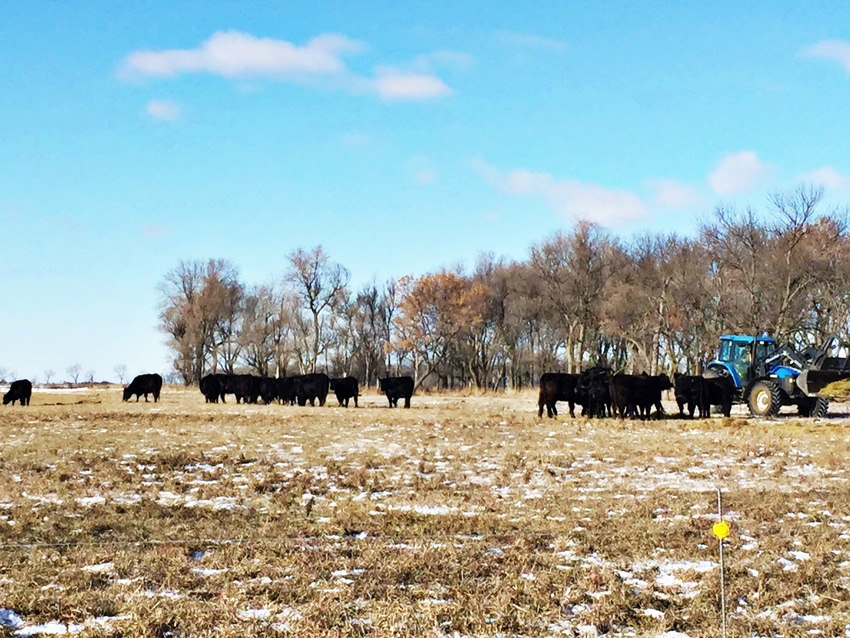4 tips for developing first-calf heifers into mature cows
A first-calf heifer must nurse her new calf and rebreed in a timely fashion, all while reaching her brood cow body weight. Here are four tips for helping her achieve these tasks.
February 13, 2017

This winter, we’ve been busy in our operation taking advantage of lower prices and purchasing bred heifers with reasonable sticker tags. As we begin to calve out these first-calf heifers, our management focus has been on developing these females into mature cows while also getting the new calves off to a healthy start.
Ultimately, what it comes down to is maintaining the new mama's plane of nutrition so she can accomplish three things — first, growing to her mature body weight; second, calving and nursing her newborn calf and; three, rebreeding within the desired calving window.
In a recent article titled, “The critical leg of the journey from replacement heifer to mature cow,” Karla H. Jenkins, University of Nebraska-Lincoln (UNL) cow-calf and range management specialist, offers some management advice for bred females as they have their first calves. Here are four tips:
1. Understand her body condition relative to fetal growth
Jenkins writes, “A spring calving replacement heifer with a target mature weight of 1200 pounds is likely weighing about 950 pounds entering the last trimester of pregnancy and would need to gain about 2.0 pounds per day prior to calving even if she was in a moderate body condition. Producers need to remember, that in the last trimester, at least half of that weight gain will be related to fetal growth and not actually contribute to the growth of the heifer herself."
2. Maintain her body condition as she begins lactating
She says, “Once the heifer calves and lactation starts both her protein and energy needs will increase substantially. The very early spring calving heifer (February or March) is not likely going to have access to any green grass for a couple of months in most of the upper Midwest. If this now-lactating heifer were fed the previously mentioned hay and 3.4 pounds of distillers grains she would be well below the energy she requires. This is a critical situation for this cow. This is even more concerning if turn-out to green grass is delayed and/or the new mother is thinner than desired.”
3. Calculate green grass into the equation
As spring gets closer and green grass becomes available, producers should calculate the available nutrients into the cow’s daily needs.
She says, “Assuming this now-lactating heifer can find enough green grass to make up half of her diet and the producer feeds the hay containing 52% TDN and 8% CP to make up the difference, this heifer is still slightly short on her energy needs. Supplying 2.2 pounds of distillers grains would help ensure this heifer's needs were met. Additionally, supplying more nutrient dense supplemental forage would be sufficient. If enough green grass were available that she could consume green growing grass ad libitum, she could meet her needs with grass alone.”
4. Take account of her needs as she nurses and rebreeds
Jenkins writes, “Shortly after peak lactation, when nutrient needs are the highest, this heifer is asked to rebreed. Therefore, making sure her nutrient needs are being met just prior to calving through breeding is critical for her to remain in the herd. Checking feed resources for nutrient content prior to late gestation will help producers determine what needs to be fed to ensure the nutrient needs of these heifers are met. Assessing body condition score frequently will also allow producers to make necessary changes to the ration in a timely manner.
READ: Supplementation needs for gestating and lactating beef cows
About the Author(s)
You May Also Like




.png?width=300&auto=webp&quality=80&disable=upscale)
